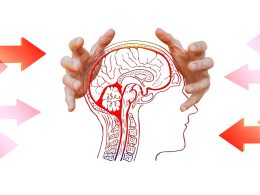Introduction
Hip injuries are common in sports, from professional athletes to weekend warriors. Whether you’re a runner, cyclist, or play sports like soccer or basketball, the risk of hip injuries is always present. Traditional treatments often involve rest, ice, pain medications, and in severe cases, surgery. But what if there was another way? Modern advances in hip therapy offer a variety of non-surgical treatments that can be just as effective as surgery, allowing athletes to get back to the game quicker and with fewer risks.
In this article, we’ll explore how hip therapy has evolved, the benefits of non-surgical treatments, and how athletes can recover from sports-related injuries without going under the knife. We’ll also discuss some of the most effective therapies available today, and how they’re changing the way we approach hip injuries in sports.
Understanding Hip Injuries in Sports
The hip is one of the most important joints in the body. It allows for a wide range of motion, making it essential for walking, running, and most athletic movements. However, due to its complexity and the constant strain placed on it during physical activity, the hip joint is prone to injuries, especially in sports that involve running, jumping, twisting, or sudden direction changes.
Some common hip injuries in athletes include:
- Hip Flexor Strains: The hip flexors are muscles responsible for lifting your leg. Overuse, sudden movements, or poor warm-up routines can lead to strains.
- Labral Tears: The labrum is the cartilage around the hip socket. Tears can occur due to repetitive movements, trauma, or dislocation.
- Tendinitis: Tendons around the hip can become inflamed due to overuse or excessive strain, causing pain and discomfort.
- Hip Bursitis: This condition involves inflammation of the bursa (fluid-filled sacs) around the hip joint, leading to pain during movement.
- Hip Fractures: Though less common in athletes, fractures can occur due to trauma or intense pressure placed on the hip joint.
Traditional treatments for these injuries often involve rest, ice, physical therapy, and in severe cases, surgery. But not every athlete needs to go through the invasive process of surgery. Non-surgical treatments are becoming more popular and effective, allowing athletes to recover and return to their sports faster.
Modern Non-Surgical Treatments for Hip Injuries
The field of hip therapy has advanced significantly in recent years. Today, there are many options available that help athletes recover from injuries without the need for surgery. Here are some of the most effective non-surgical treatments for hip injuries:
1. Physical Therapy
Physical therapy remains one of the most powerful tools for treating hip injuries. A skilled physical therapist can develop a personalized rehabilitation plan to address the specific injury and help the athlete regain strength, mobility, and flexibility in the hip. The goals of physical therapy for hip injuries typically include:
- Pain reduction: Techniques such as ice, heat therapy, and electrical stimulation help manage pain and reduce inflammation.
- Strengthening exercises: Targeted exercises can strengthen the muscles around the hip, providing better support and reducing the risk of future injury.
- Stretching and flexibility: Tight muscles around the hip joint can contribute to pain and injury. Stretching exercises help improve flexibility and range of motion.
For athletes recovering from injuries like hip flexor strains or labral tears, physical therapy is essential for regaining function and mobility without the need for surgery.
2. Regenerative Medicine: PRP Therapy
Platelet-rich plasma (PRP) therapy is a cutting-edge treatment that uses the patient’s own blood to promote healing. The procedure involves drawing blood, processing it to concentrate the platelets, and then injecting the PRP directly into the injured area, such as the hip joint.
Platelets contain growth factors that help repair tissue and reduce inflammation. PRP therapy can help heal damaged cartilage, tendons, and ligaments in the hip, making it an excellent option for injuries like labral tears, tendinitis, and even arthritis.
The advantage of PRP therapy is that it uses the body’s natural healing capabilities, meaning the risk of complications is minimal. Many athletes have turned to PRP injections to recover faster and avoid surgery.
3. Stem Cell Therapy
Stem cell therapy is another form of regenerative medicine that holds great promise for treating hip injuries. Stem cells are special cells that have the ability to develop into different types of tissues, including cartilage, bone, and muscle. When injected into an injured area like the hip, stem cells can help regenerate damaged tissue and accelerate the healing process.
Stem cell injections are particularly useful for treating cartilage damage in the hip joint, which can occur from labral tears or degenerative conditions like osteoarthritis. While still being studied, stem cell therapy has shown promising results in reducing pain and improving function without the need for invasive surgery.
4. Shockwave Therapy
Extracorporeal Shock Wave Therapy (ESWT) is a non-invasive treatment that uses high-energy sound waves to stimulate healing in soft tissues. This therapy has been found to be effective in treating chronic hip injuries, such as tendinitis and hip bursitis.
Shockwave therapy works by increasing blood flow to the injured area, breaking down scar tissue, and promoting tissue regeneration. The treatment is quick, painless, and doesn’t require any downtime, making it an attractive option for athletes who want to recover quickly and get back to their sport.
5. Cryotherapy
Cryotherapy involves exposing the body or a specific area (like the hip) to extremely cold temperatures. This helps reduce inflammation, numb pain, and promote healing. Athletes often use cryotherapy as part of their recovery routine after intense physical activity or injury.
While cryotherapy alone may not treat all types of hip injuries, it can be a helpful part of a comprehensive treatment plan. Cryotherapy is often used alongside physical therapy or other therapies to speed up recovery.
6. Chiropractic Care
Chiropractic adjustments can help improve the alignment of the hip and pelvis, which can reduce pain and improve function. Chiropractors use spinal manipulations and joint adjustments to restore mobility, relieve pressure, and decrease inflammation in the hip area.
For athletes experiencing hip pain related to misalignment or mechanical issues, chiropractic care can provide significant relief and prevent further injury.
Benefits of Non-Surgical Hip Therapy
Choosing non-surgical treatment options for hip injuries comes with a number of benefits:
- Faster Recovery: Many non-surgical treatments allow athletes to return to their sports more quickly than with surgery.
- Reduced Risk of Complications: Surgery carries risks such as infections, blood clots, and prolonged recovery time. Non-surgical treatments are typically safer with fewer complications.
- Less Downtime: Athletes often find they can resume their normal activities sooner with non-invasive treatments, helping them get back to peak performance faster.
- Cost-Effective: Surgery can be expensive, especially when factoring in hospital stays and rehabilitation costs. Non-surgical treatments often cost less and require fewer visits to specialists.
Conclusion
Hip injuries are common in sports, but modern non-surgical treatments offer effective solutions that allow athletes to recover without the need for invasive procedures. From physical therapy and PRP therapy to stem cell injections and shockwave therapy, these treatments help accelerate healing, reduce pain, and improve function, all while minimizing downtime and risk.
If you’re an athlete suffering from a hip injury, there’s no need to rush into surgery. Explore the variety of non-surgical treatment options available and consult with your healthcare provider to find the best approach for your specific condition. With modern therapy options, you can recover efficiently and return to the game stronger than ever.












